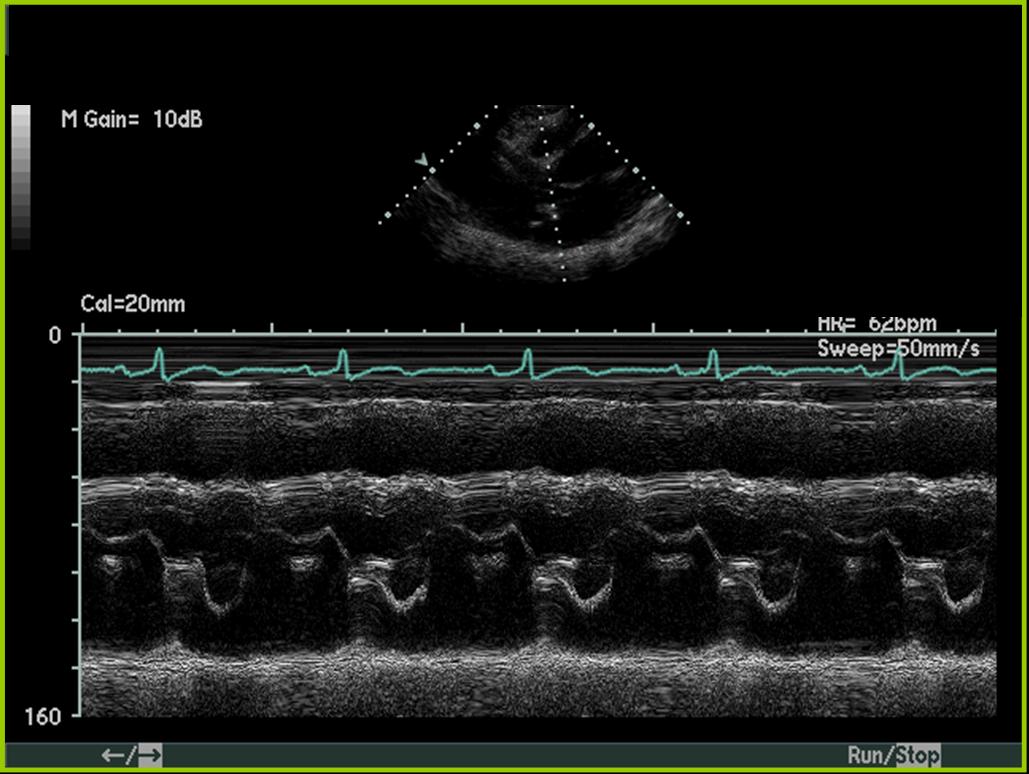Mitral Regurgitation Electrocardiogram: Difference between revisions
Varun Kumar (talk | contribs) No edit summary |
Varun Kumar (talk | contribs) No edit summary |
||
| Line 1: | Line 1: | ||
{{CMG}} | |||
'''Associate Editor-In-Chief:''' {{CZ}} | |||
{{Editor Help}} | |||
The | [[Image:Mitralinsuff TEE.jpg|right|thumb|400px|transesophageal echocardiogram of mitral valve prolapse]] | ||
The [[echocardiogram]] is commonly used to confirm the diagnosis of mitral regurgitation. Color doppler flow on the transthoracic echocardiogram (TTE) will reveal a jet of blood flowing from the left ventricle into the left atrium during ventricular [[systole]]. | |||
Because of the inability in getting accurate images of the left atrium and the pulmonary veins on the transthoracic echocardiogram, a [[transesophageal echocardiogram]] may be necessary to determine the severity of the mitral regurgitation in some cases. | |||
Factors that suggest severe mitral regurgitation on echocardiography include systolic reversal of flow in the pulmonary veins and filling of the entire left atrial cavity by the regurgitant jet of MR. | |||
{| | |||
|- | |||
|[[Image:Mitral Regurgitation.jpg|thumb|350px|left|Flail Posterior Mitral Leaflet | |||
M Mode]] | |||
|- | |||
|} | |||
Revision as of 01:03, 24 February 2011
Editor-In-Chief: C. Michael Gibson, M.S., M.D. [1]
Associate Editor-In-Chief: Cafer Zorkun, M.D., Ph.D. [2]
Please Take Over This Page and Apply to be Editor-In-Chief for this topic: There can be one or more than one Editor-In-Chief. You may also apply to be an Associate Editor-In-Chief of one of the subtopics below. Please mail us [3] to indicate your interest in serving either as an Editor-In-Chief of the entire topic or as an Associate Editor-In-Chief for a subtopic. Please be sure to attach your CV and or biographical sketch.

The echocardiogram is commonly used to confirm the diagnosis of mitral regurgitation. Color doppler flow on the transthoracic echocardiogram (TTE) will reveal a jet of blood flowing from the left ventricle into the left atrium during ventricular systole.
Because of the inability in getting accurate images of the left atrium and the pulmonary veins on the transthoracic echocardiogram, a transesophageal echocardiogram may be necessary to determine the severity of the mitral regurgitation in some cases.
Factors that suggest severe mitral regurgitation on echocardiography include systolic reversal of flow in the pulmonary veins and filling of the entire left atrial cavity by the regurgitant jet of MR.
 |